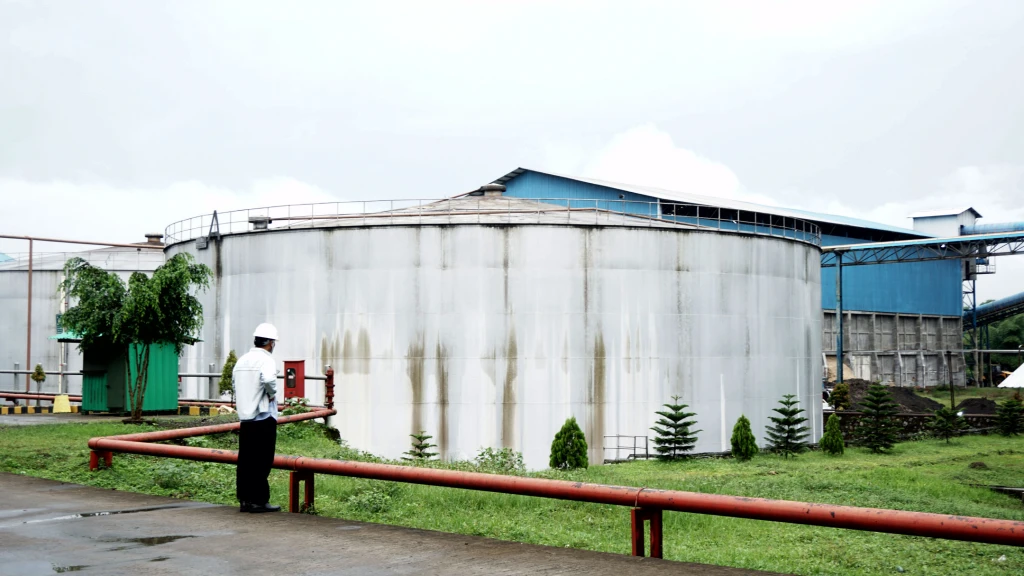PT RMI's Environmentally Friendly Operations

PG RMI's good waste management performance has resulted in a PROPER certificate from the Ministry of Environment and Forestry (KLHK). PROPER is a Public Disclosure Program for Environmental Compliance. This program aims to improve the company's environmental management performance to comply with existing regulations.
The KLHK PROPER assessment uses five colors as a symbol of achievement. Gold means best, green and blue means good, red means bad, and black means worst. PG RMI received KLHK PROPER in 2021 with a blue rating.
As a new company, the blue color is actually sufficient as proof that RMI is environmentally friendly. However, RMI is determined to be able to get gold color PROPER in the future, especially since the facilities and infrastructure for that are already available.
Therefore, from time to time the following things have been improved: control of water pollution, control of air pollution, and handling of toxic hazardous waste (B3).
Liquid Waste Treatment
At PG RMI, liquid waste is directed into two channels. The first line for effluent from the process station. The second channel is for liquid waste from the power plant utility station and from the mill station. The waste from these canals is then processed in the waste water treatment plant (WWTP) unit.
The clear water that flows into this river is liquid waste that has been treated in such a way before being disposed of.
Waste treatment at WWTP is carried out biologically (biologically) and chemically (chemically).
In biological waste treatment, the role of bacteria is very necessary. Therefore, the bacteria are supplied with sufficient air and nutrients in the form of phosphate and urea in order to reproduce in large numbers. After the amount is sufficient, the bacteria are mixed with the waste. The goal is to reduce the level of chemical oxygen demand (COD) in the waste so that the waste reaches the specified quality standard. COD is the amount of oxygen needed to chemically break down organic materials in water.
After being treated by bacteria, the liquid waste is then sent to the clarifier tank for chemical treatment. In the tank there is a chemical solution to settle the dirt that is still carried away.
The sediment will enter the filter press, while the clear water comes out to the fish pond. The water that has been tested in the fish pond is then channeled into the river for disposal.
Fish ponds are an indicator of the success rate of waste treatment. If the fish die, it means that the waste treatment is not good. Vice versa. But this is not the only measuring tool. Because, at PG RMI, liquid waste is also analyzed in the laboratory. The results of the analysis are used as a reference for the improvement of WWTP operations.
Control of Potential Air Pollution
The potential for air pollution in sugar factories mainly comes from fly ash that comes out of burning bagasse (bagasse). Solid material or fly ash left over from the combustion process, in large quantities is a dangerous pollutant when mixed with the atmosphere.
PG RMI realizes this potential. Then installed electrostatic precipitator (ESP), dust catcher electrode. This is the most widely used dust catcher technology in modern boilers.
The effectiveness of ESP in capturing ash is very high, reaching 99.84 percent. In other words, the amount of ash waste that comes out of the chimney is only about 0.16 percent.
It's not just the potential for air pollution inside the factory that is RMI's concern. The potential for dust flying on the streets when trucks pass is also handled. RMI prevents air pollution by sprinkling water on the roads that trucks pass, especially during the dry season. Watering is done with a special car regularly in the morning, afternoon, and evening. Sometimes, if needed, watering is also done at night.
Hazardous Waste Handling
B3 waste in sugar factories includes chemical gallons, engine oil, battery batteries, TL lamps, and oil-contaminated rags. Bottom ash and fly ash produced from coal combustion are also categorized as B3. This is because, according to regulations, in all industrial power plants, both are in the B3 category.
All B3 waste in PG RMI is transferred from the factory in cooperation with a third party who has a special permit for the transportation and utilization of waste. The permit is issued by the Ministry of Environment and Forestry. Therefore, whenever releasing B3 waste, the transporter must bring a manifest and PG RMI must report it to the Ministry of Environment and Forestry.
Coal waste becomes B3 which is the most expensive to dispose of for RMI. Therefore, RMI actually continues to try to avoid the use of coal. *